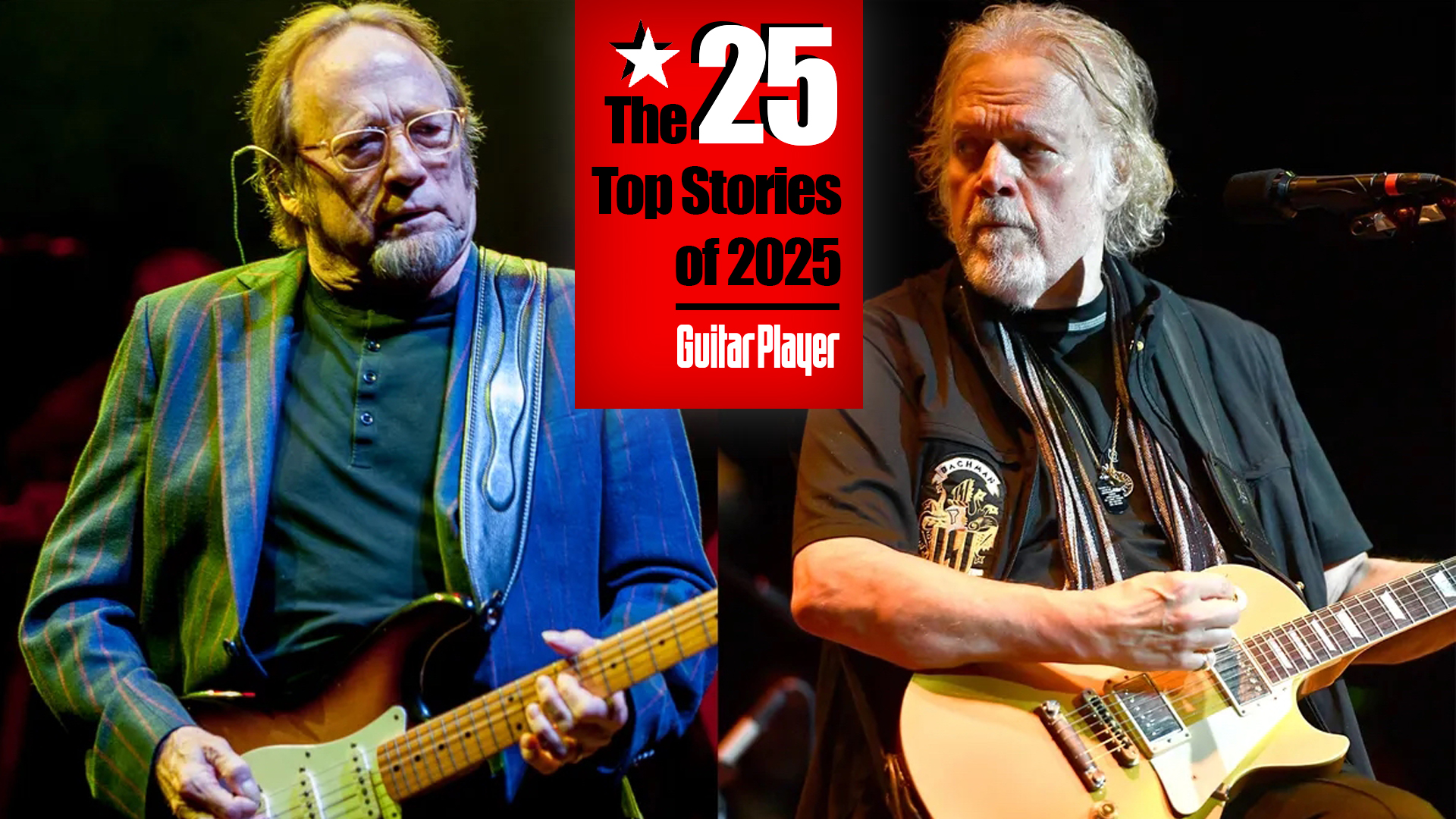Gibson’s Murphy Lab Pays Tribute to Johnny Winter’s Well-Traveled 1964 Firebird V
This flawless – and very limited – re-creation is an outstanding guitar by any measure.

Eons ahead of its time when introduced in 1963, Gibson’s original Firebird has represented an iconic example of modernist electric guitar design ever since, remaining timeless and contemporary in equal measure.
And from the time Johnny Winter started setting stages ablaze with this revolutionary electric in the late ’60s, the blues guitar legend has served as the key reference point for what this radically angular and eclectically appointed instrument can do.
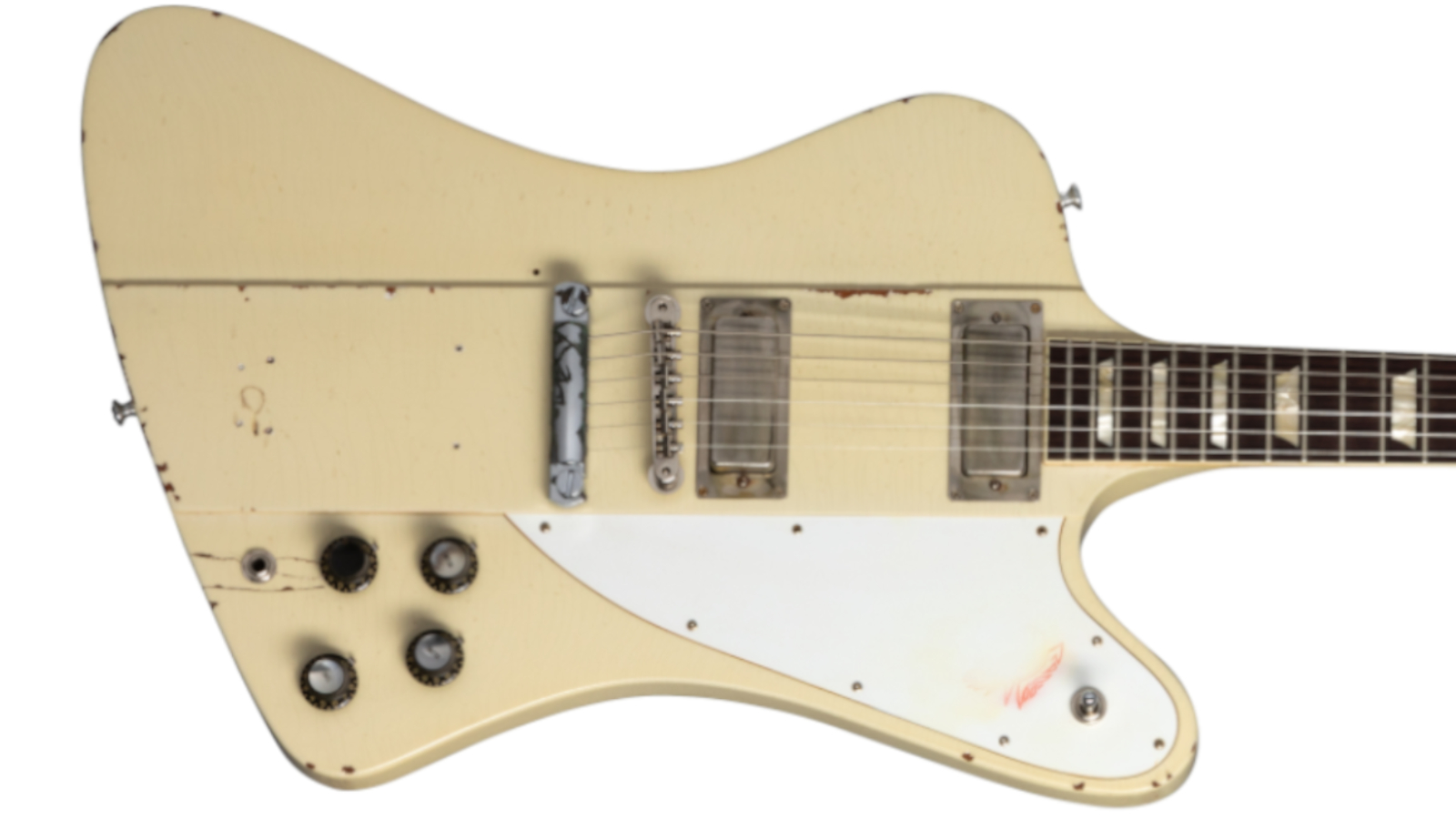
The Gibson Custom Shop has created the ultimate tribute to both the man and the instrument in the new Johnny Winter 1964 Firebird V, and it’s a doozy of a guitar for anyone who has ever appreciated the equally unique look and voice of this classic.
The Johnny Winter 1964 Firebird V isn’t merely a period-correct reissue of the original model; it’s also a pinpoint-perfect re-creation of Winter’s best-known ’64 Firebird V, a guitar used for countless gigs and sessions, and which appears in all its glory on the cover of the album Captured Live!
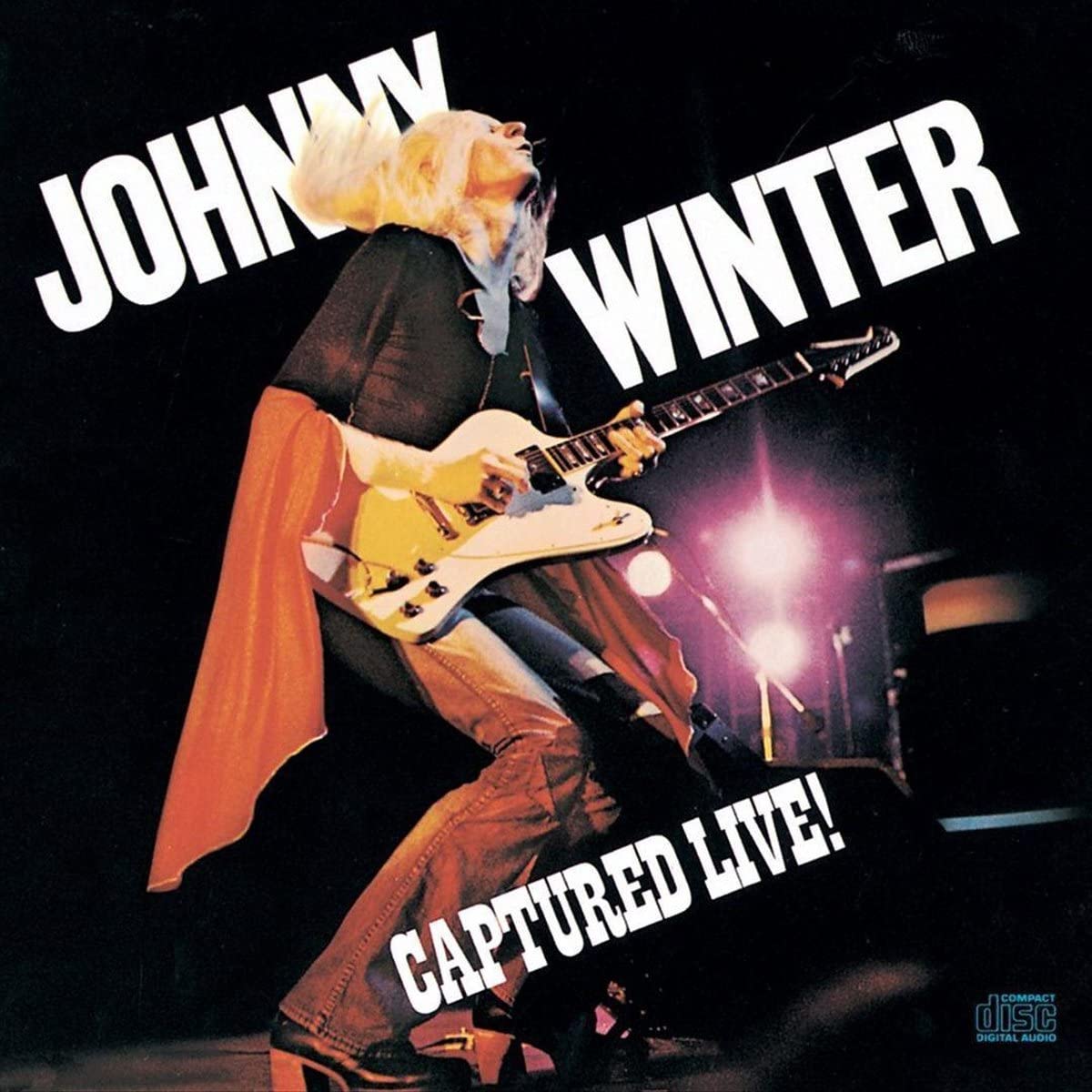
As such, the Gibson Custom Shop has fully replicated the holes in the body where the original Maestro vibrola was removed, the stop-bar tailpiece that replaced it, the missing reflector insert in the upper tone control knob, the faded Firebird logo on the pickguard, the splits in the wood where the original’s jack was once repaired and more.
The cosmetics are the skilled work of Gibson’s Murphy Lab, which has added a myriad of dings, scuffs and scrapes to the well-aged Polaris White finish to bring the authenticity home.
While only some 500 examples of the Firebird V were shipped in 1964, this Johnny Winter tribute is an even rarer bird, limited to 125 guitars
The original Firebird was created by Ray Dietrich, the automotive designer responsible for the Duesenberg and other classic cars.
All the latest guitar news, interviews, lessons, reviews, deals and more, direct to your inbox!
Those built from 1963 to ’65 get their “reverse-body” nickname from the fact that the horns on the upper bout and treble-side protrusion on the lower bout appear the reverse of those found on a traditional guitar of the era (some note a resemblance to a flipped-over Jazzmaster).

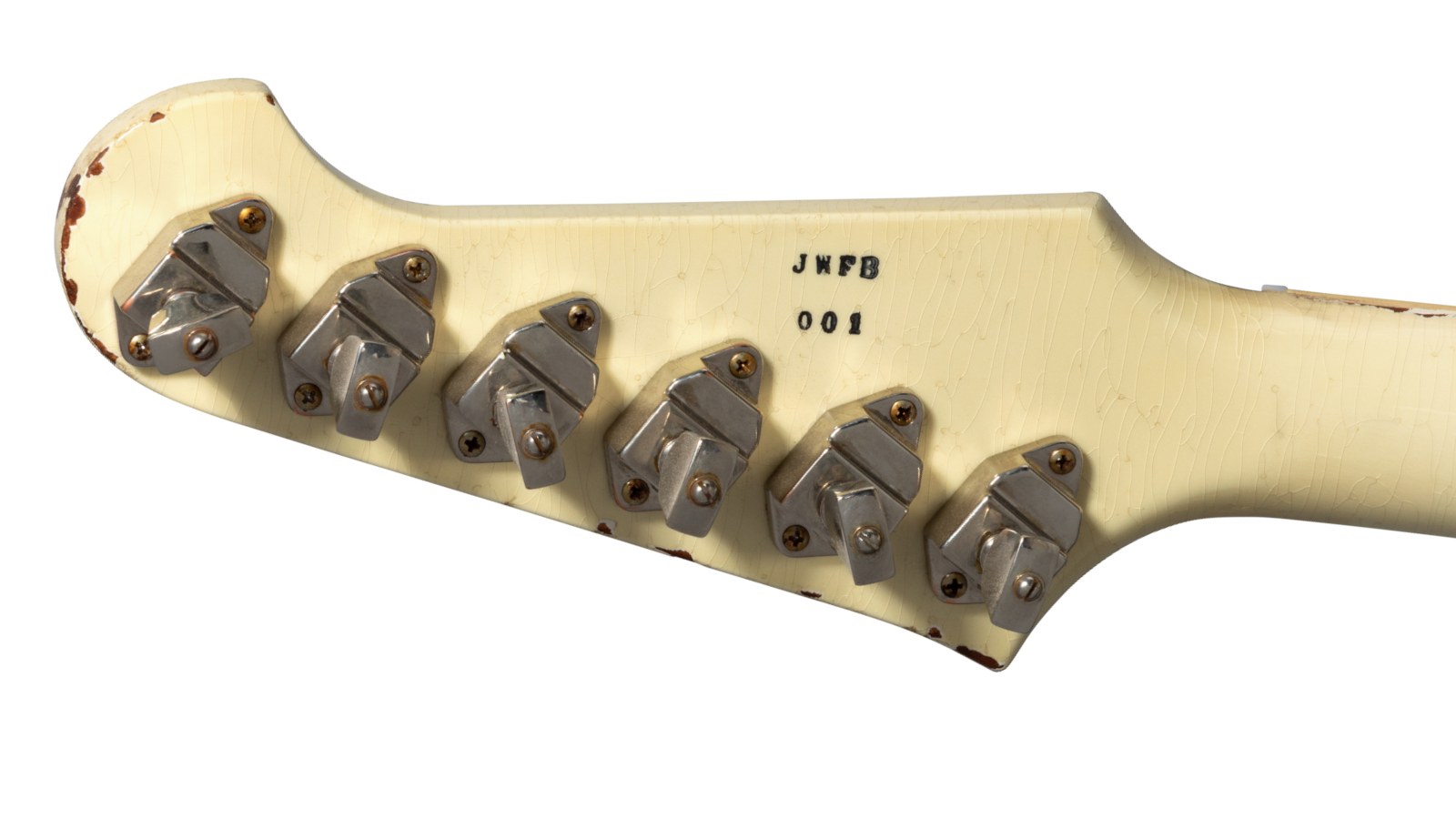

The sleek lines continue in the six-to-a-side phoenix-head profile of the headstock, which used banjo tuners to avoid spoiling the esthetics.
Given the quirks of the original Firebird design, you can bet it’s no easy guitar to re-create accurately, and Gibson’s head of product development, Mat Koehler, concurs.
“I will say that in the great catalog of Gibsons made over the past 128 years, the original reverse-style Firebird is one of the most difficult to replicate,” Koehler tells GP.
The original reverse-style Firebird is one of the most difficult to replicate
Mat Koehler
“The nine-ply construction, the wings… It was clear that someone who was not a luthier designed that instrument. Ray Dietrich was a brilliant mind, but he did not make it easy on production,” he says with a laugh.
“That’s actually why Gibson moved to the non-reverse Firebird in 1965. At the Custom Shop, we are making them exactly how they were made in Kalamazoo in ’63, ’64, so this Johnny Winter has exactly the same woods, exactly the same construction, and it’s very, very true to his original.”

As vaunted as the Custom Shop’s reissue guitars have been for several years, Koehler tells us the step up to modern technology finally enabled Gibson to take the authenticity over the top, and it really shows here.
“For 2019, we totally revamped the entire range, including pickups and so forth, and that’s when we took a deep dive into the Firebird, so we corrected a lot of the little issues,” he reveals.
We’ve now got a 3-D scanner, and were lucky enough to get access to the original Johnny Winter guitar
Mat Koehler
“We’ve now got a 3-D scanner, and were lucky enough to get access to the original Johnny Winter guitar, so in a couple of hours we had a 3-D map of the entire guitar.
“And then over the period of a couple weeks we cleaned that up and created programs out of it, for CNC and otherwise, so we were able to capture that and get the exact dimensions. So when you hold this Johnny Winter model, you’re holding the exact feel of the original, which is cool.”
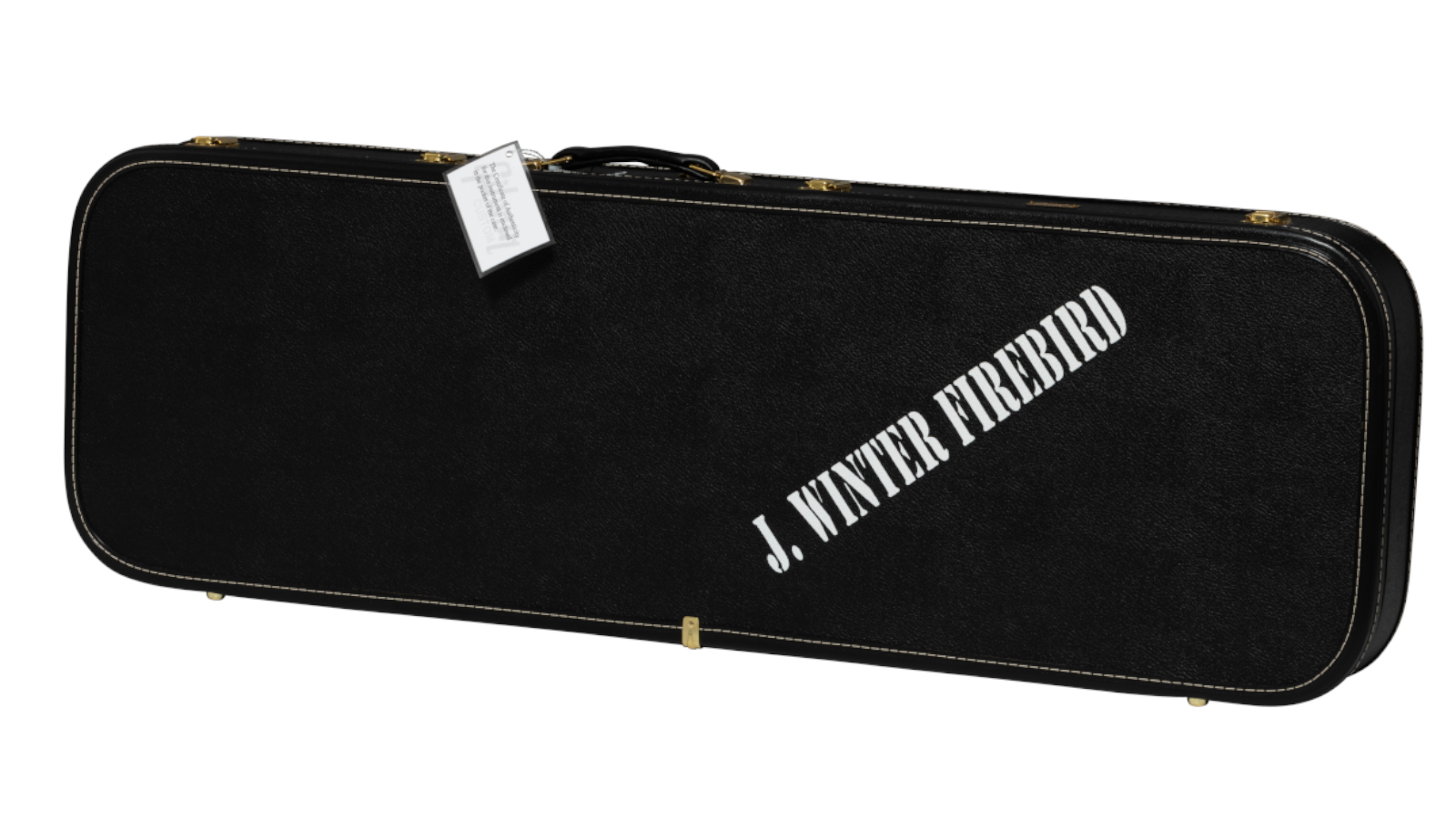
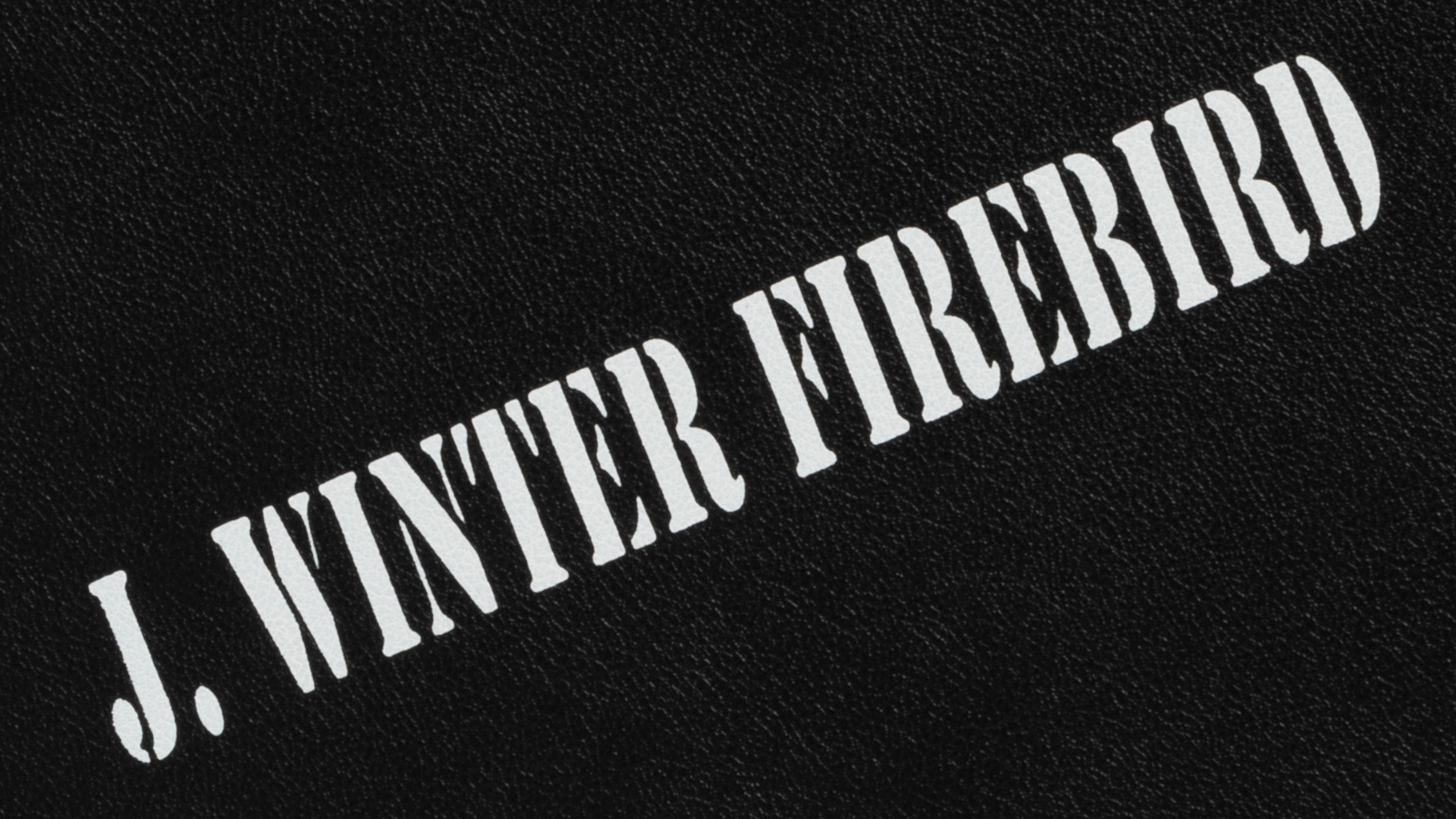

Out of the case and into the hands, this thing certainly delivers on the vintage-Firebird experience. I’ve said this before about the Murphy Lab work, but if a pal came along and said, “Hey, check out the ’64 Firebird I just bought!” I would in no way doubt the veracity of the guitar upon popping open the gently aged rectangular case and lifting out this very instrument.
Not only does the aging look right, it also feels right: the softness of the body edges and angles, the palm-gracing curve of the medium-C ’64 neck profile and its comfortably rolled binding edges (another Murphy Lab “extra mile” detail that Koehler credits) – it all contributes to the time-machine experience this guitar delivers.
As Koehler indicated, the Firebird’s uniqueness goes far deeper than its looks and includes a complex “through neck” constructed from a nine-ply mahogany and walnut core that forms both the neck and the center of the body, with solid mahogany wings attached to its sides to complete the shape, all perfectly rendered here.
The neck is capped with a nicely dark Indian rosewood fingerboard edged in aged binding, with aged celluloid trapezoid inlays.
Equally significant to the original Firebird’s revolutionary design was the bespoke set of pickups Gibson created for it
Equally significant to the original Firebird’s revolutionary design was the bespoke set of pickups Gibson created for it. Often mistaken for a fully covered rendition of the mini-humbucker that would end up on the Gibson Les Paul Deluxe at the dawn of the ’70s, it is in fact its own design, made with two hum-rejecting coils, each wound around its own Alnico bar magnet, which also takes the place of any pole pieces.
Many past Firebird reissues have carried hotter ceramic-magnet pickups, but Gibson has gone the whole nine yards here to re-create the vintage-style units with Alnico magnets and lower-output windings, resulting in pickups of 6.77k ohms in the neck position and 6.83k ohms in the bridge.
Controls are the traditional four-knob setup, with a three-way switch on the point of the lower horn.


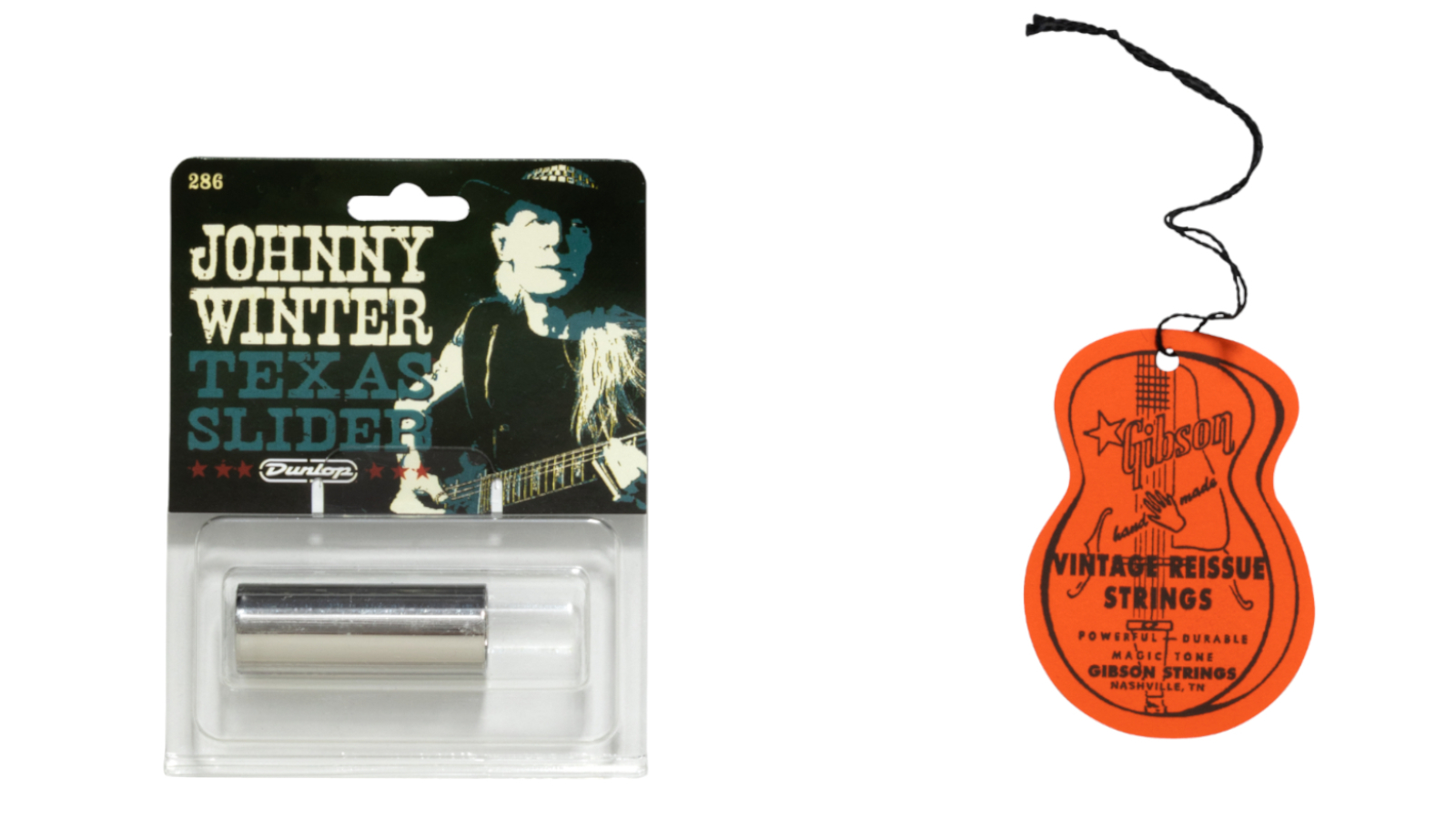
In addition to the lightly aged rectangular hardshell case with “Johnny Winter” stenciled on the outside, the full package includes a certificate of authenticity, a print of legendary photographer Mick Rock’s iconic shot of Winter in action, a slide and a handful of Johnny Winter Dunlop guitar picks.
Played unplugged, the Johnny Winter 1964 Firebird V is impressively resonant and lively, thanks no doubt to the veracity of the overall build, but likely aided by that stop-bar tailpiece modification, too.
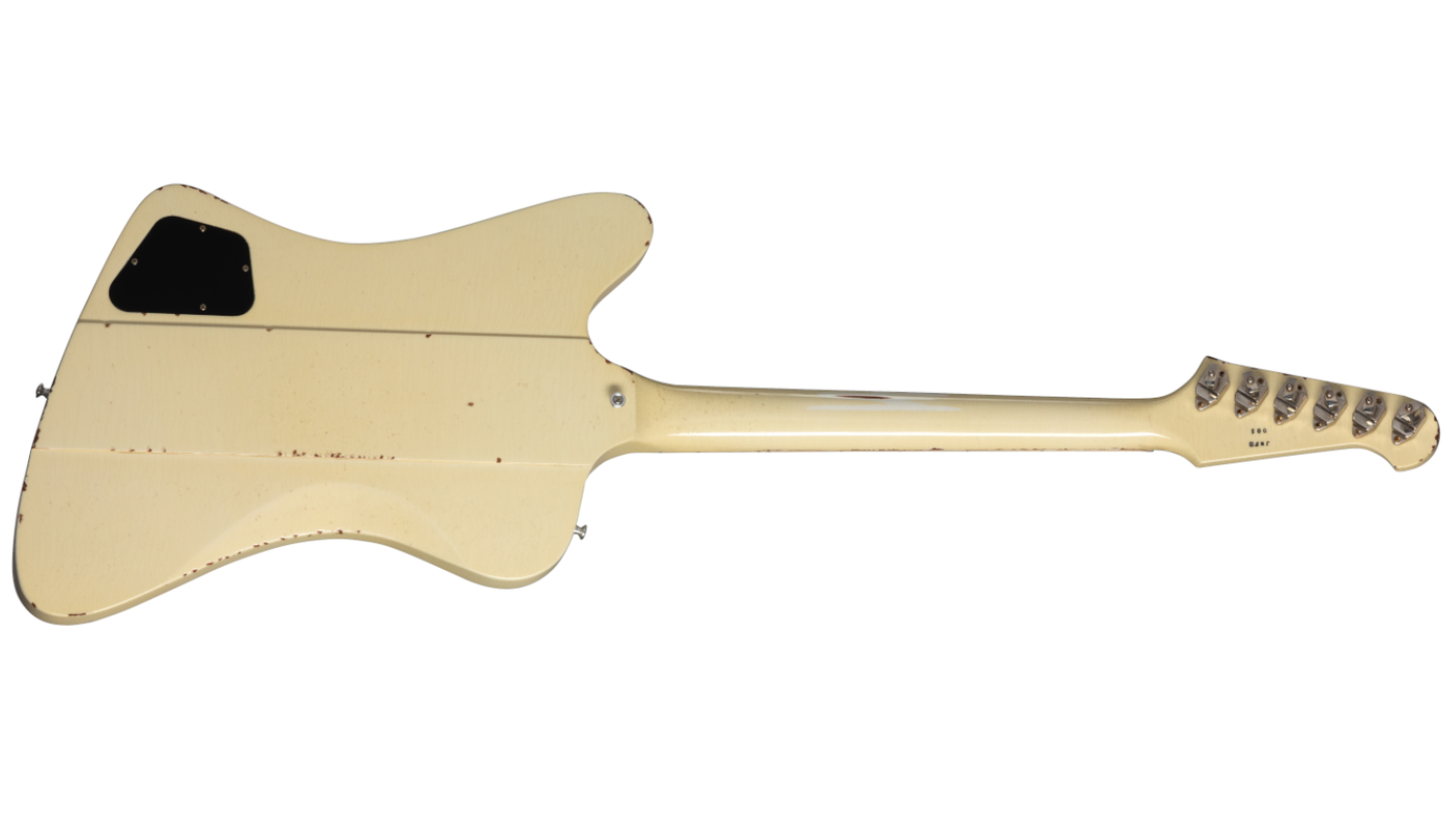
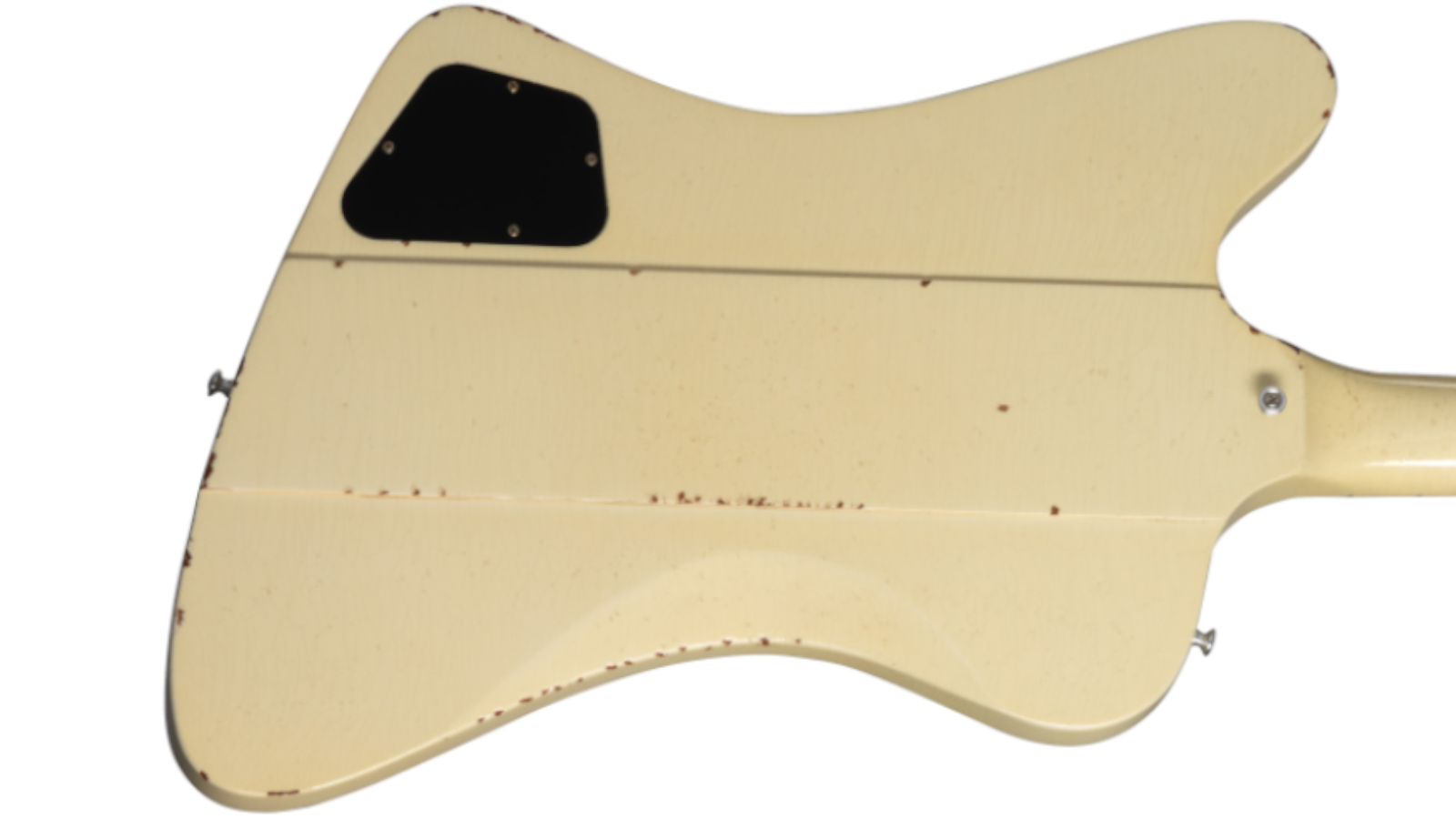
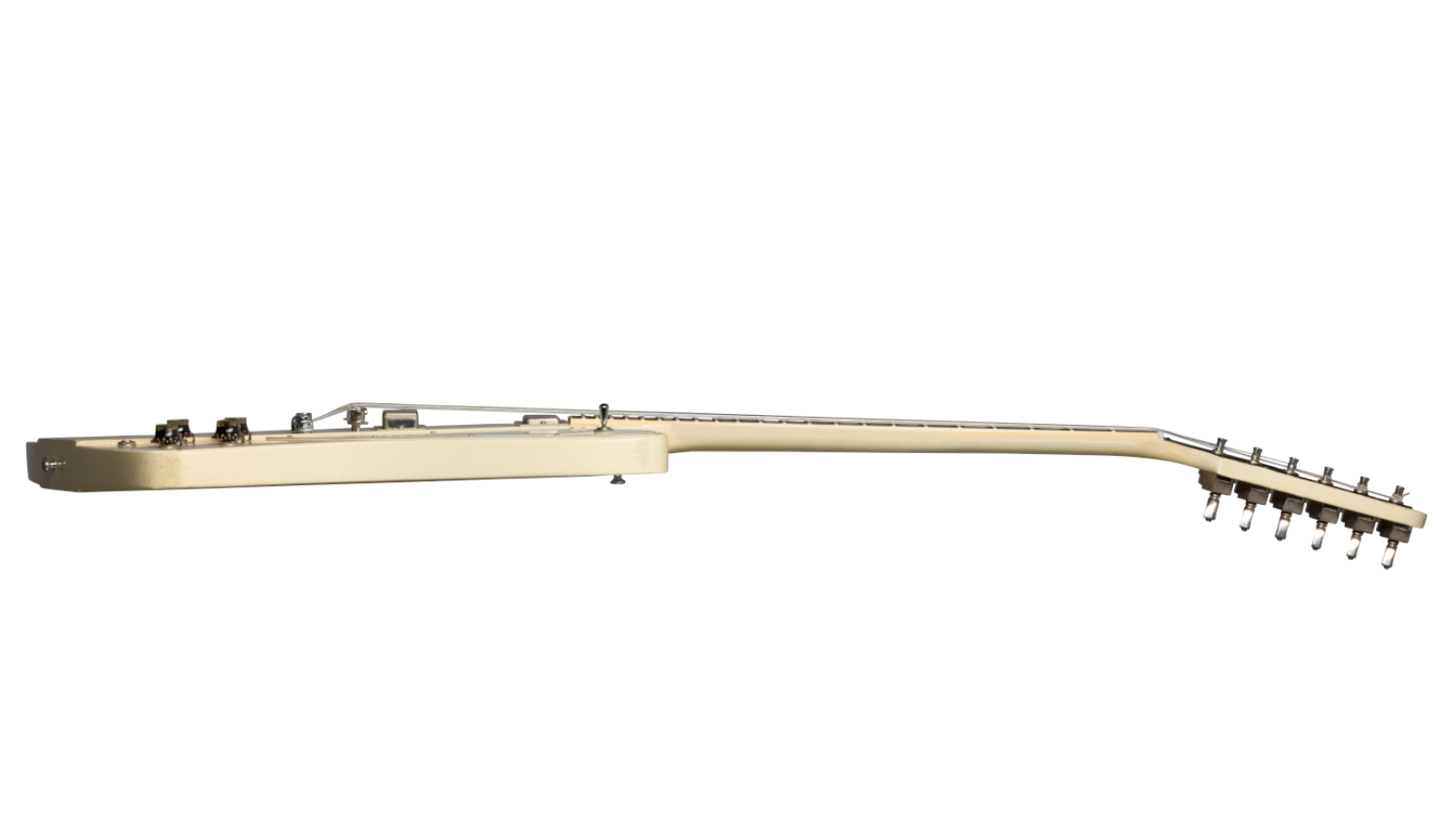
Amped up through a Friedman Dirty Shirley Mini with a 1x12 cab and a 1966 Fender Super Reverb 4x10 combo, and teamed up with a variety of overdrive pedals, the model’s full promise paid off in spades.
Firebirds are quirky beasts, for sure, and even when you love them, in theory you can still pick up a particular example and go, “Nah, not working for me!” This Johnny Winter homage, then, would be the polar opposite of that experience. Which is to say, yeah, very much working for me.
In fact, I’d say this yielded the most satisfying Firebird-playing experience I’ve had since testing out a particularly nice vintage example from among a noted Firebird collector’s favorites some 12 years ago or more.
Playability is superb, and even inspiring, and the tone is exactly what these unusual creations excel at
I suspect the accurately re-created Alnico pickups are helping a lot here, but either way, the guitar is characteristically bright without being the least bit harsh, as well as surprisingly thick and rich, with a hair of compression in the attack to make the legendary bite and sting sweetly musical.

Getting the formula so right, as Gibson has here, also serves as a reminder of how versatile a great Firebird can be – diving smoothly into everything from hard rock to blues to indie to jangle and twang – and it could open the door to this kind of retro-modern style for countless players who never thought they’d get along with the design… or, to 124 of them at least, if we can find a way to forget to send back this limited-run sample.
Well done, Gibson Custom Shop, on a fitting tribute to the Firebird master.
By any measure, it’s an outstanding guitar.
The Johnny Winter 1964 Firebird V is available to order here.
Dave Hunter is a writer and consulting editor for Guitar Player magazine. His prolific output as author includes Fender 75 Years, The Guitar Amp Handbook, The British Amp Invasion, Ultimate Star Guitars, Guitar Effects Pedals, The Guitar Pickup Handbook, The Fender Telecaster and several other titles. Hunter is a former editor of The Guitar Magazine (UK), and a contributor to Vintage Guitar, Premier Guitar, The Connoisseur and other publications. A contributing essayist to the United States Library of Congress National Recording Preservation Board’s Permanent Archive, he lives in Kittery, ME, with his wife and their two children and fronts the bands A Different Engine and The Stereo Field.

